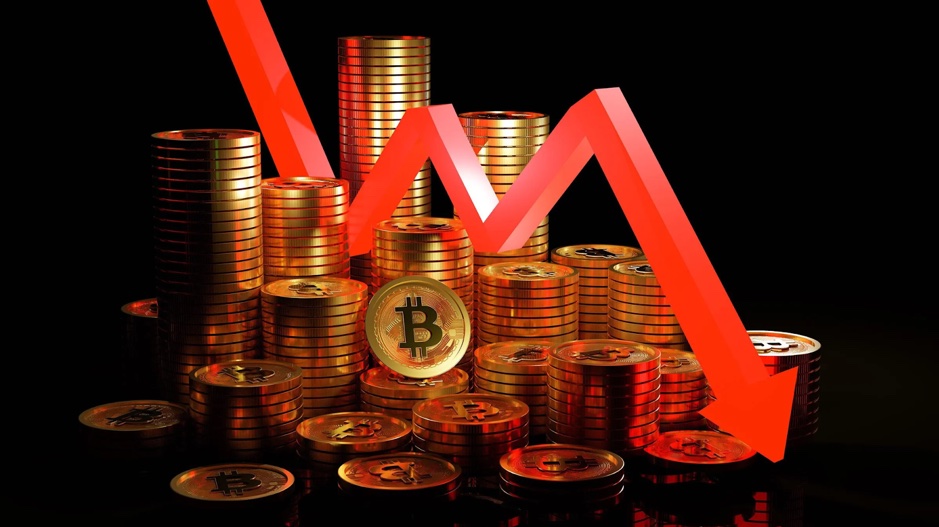What’s Driving The Decline In Bitcoin’s Price Today
2024-08-28 09:39:10Bitcoin’s price has fallen today due to a combination of macroeconomic pressures, reduced network activity, and uncertainty about a potential Federal Reserve rate cut.

Source: decrypt.co
Between August 26 and August 27, Bitcoin saw a 3.4% drop after falling below the $63,500 support level, which had been stable for two days. This decline is partly due to worsening macroeconomic outlooks and decreased Bitcoin network usage. Traders are now debating whether these factors are already reflected in the price and how much further Bitcoin might decline if the $61,000 support level is breached.
Nvidia’s Earnings Are Influencing Risk Markets Including The Price Of Bitcoin
Crypto and stock market trader Blockchainedbb has predicted that Bitcoin’s price could rise to $65,000, following a previous accurate forecast of a drop to $61,000. According to a post on X, his potential increase might be fueled by Nvidia's stronger-than-expected earnings, which could trigger smart money to liquidate late short sellers betting on Bitcoin’s decline. However, a strong performance in tech stocks doesn’t necessarily mean a boost for Bitcoin, and some analysts believe the effect could be the opposite.
Nomura analyst suggests that upcoming tech earnings could challenge investor expectations of US interest rate cuts. Companies like Nvidia, CrowdStrike, Salesforce, and HP are scheduled to report earnings on August 28, with Autodesk following on August 29. Matsuzawa notes that if corporate profits remain strong, it could reduce the likelihood of subsidies for tech stocks, as reported by CNBC.
The bond market currently anticipates a 100% chance of at least a 0.50% interest rate cut by year end, according to the CME FedWatch tool. There’s also a 71% chance of a cut of 0.75% or more. A reversal of these expectations could trigger a stock market correction, raising concerns among Bitcoin investors that such a shift might negatively impact Bitcoin’s price.
Additionally, the S&P CoreLogic Case Shiller Index showed a 5.4% year over year increase in US home prices for June. Brian Luke, head of commodities, real and digital assets at S&P Dow Jones Indices, highlighted that this increase, surpassing the Consumer Price Index, is adding pressure to the political agenda ahead of the election season, as reported by Yahoo Finance.
In summary, recent housing market data does not justify aggressive interest rate cuts, which is unfavorable for risk-on assets like Bitcoin. Although Bitcoin’s correlation with the traditional stock market has been low, heightened risk perception tends to drive traders towards safer assets such as gold and highly profitable companies.
A Decline In Bitcoin Network Activity Is Dampening Investor Interest
In addition to broader macroeconomic factors, declining Bitcoin network activity is contributing to reduced investor interest. The number of seven-day active addresses has dropped to its lowest point in two months, which typically signals a decrease in retail activity. While whales and institutional investors may still be accumulating, this trend does not reflect a broader increase in adoption. For the week ending August 26, there were 668,732 active addresses involved in sending or receiving BTC, marking a 4% decrease from two weeks prior. Moreover, the median transfer volume has fallen to 0.00376 BTC, the lowest level since December 2023. This indicates fewer users and a decline in average transaction size on the Bitcoin network.
Ultimately, the recent weakness in Bitcoin’s price can be linked to the reduced likelihood of the US Federal Reserve implementing a 0.50% or 0.75% interest rate cut by year end. This uncertainty heightens investor risk aversion as inflationary concerns persist, and lower network activity further impacts Bitcoin’s market performance.
Disclaimer: FameEX makes no representations on the accuracy or suitability of any official statements made by the exchange regarding the data in this area or any related financial advice.